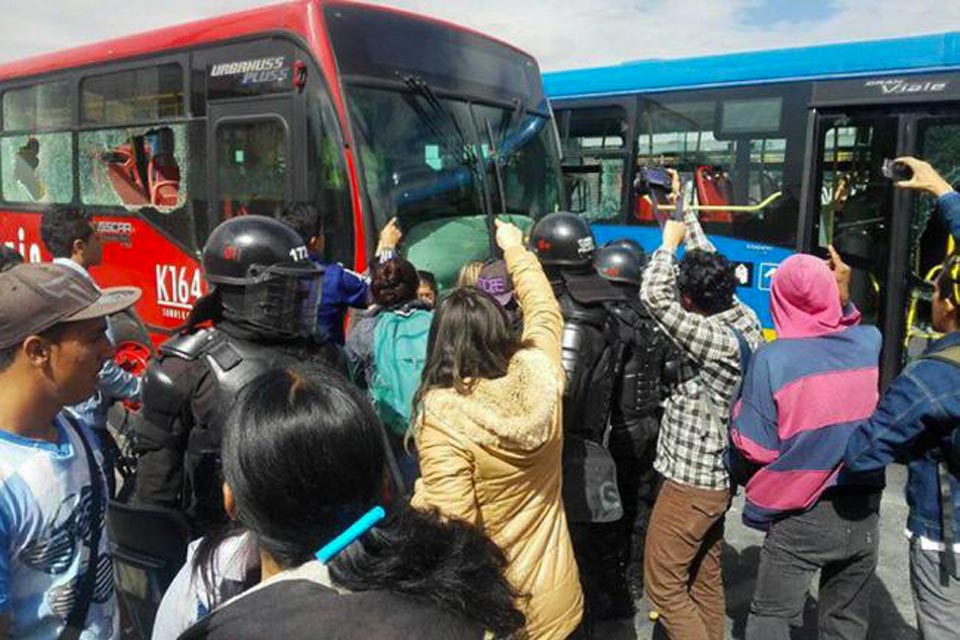Colombian police seized 13.4 tons of cocaine yesterday in northwest Antioquia, in what is being called the country’s largest drug bust ever.
The drugs were reportedly discovered hidden underground on four farms, near the country’s border with Panama and lying along routes frequently used for smuggling cocaine to the United States.
President Santos took to Twitter to boast that the haul, seized in what officials are calling Operation Agamemnon II, had a street value of $360 million.
La mercancía, avaluada en US$360 millones, pertenecía al Clan del Golfo y fue incautada en 4 centros de acopio en un radio de 6 km, entre los municipios de Carepa y Chigorodó, Antioquia. pic.twitter.com/9Pfb0RviVX
— Juan Manuel Santos (@JuanManSantos) November 8, 2017
The stash apparently belonged to the “Gulf Clan,” also known as the Gaitanista Self-Defence Forces of Colombia (AGC). The AGC is one of Colombia’s largest armed groups, formed principally from ex-members of the now-demobilized Self-Defence Forces of Colombia (AUC).
The sting comes as the Colombian government finds itself the target of increased criticism from the United States over its handling of the so-called war on drugs.
President Santos has said that 362 tons of cocaine have been seized this year, already surpassing the 2016 total. The government also claims to have forcibly eradicated 44,000 hectares (more than 108,000 acres) of illicit crops.
Nevertheless, Colombia has seen a surge in cocaine production in recent years as the peace process progressed. And the trend continues: figures reported in July announced that cocaine production reached an all-time high in 2016. The UN Office of Drugs and Crime added that coca cultivation increased by 52% last year.
US and Colombian officials have both said that part of the problem is poor implementation of the crop-substitution program outline in the peace accord.
Another reason for the spike in coca production, experts say, is the government’s decision to discontinue aerial fumigation in 2015, citing the health risks implicated in the program.
In spite of US criticism, however, Bogotá does not apparently intend to resume fumigation. It has recently placed the blame for increased production on farmers supposedly racing to plant more coca in order to then uproot the crop and claim subsidies.





